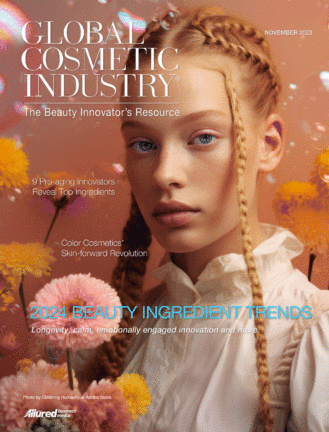Strategies for Enhanced Customer Conversion

Part 4 of a 4-part series: Leveraging digital marketing to not only survive but thrive in a competitive landscape.
In an era where the success of a brand hinges on its ability to target, resonate and convert, harnessing trust, intrigue and education, or the TIE incentivesa, has become paramount in the process of converting sales with prospects the first time.
In this final article of my ongoing series, I’ll discuss the integration of TIE incentives into advertising and marketing strategies at the apex of the marketing funnel, uncovering the tactics that empower brands to not only survive but thrive in this competitive landscape.
Understanding the Audience: Targeting for Optimal ROI
As the cost of audience reach escalates, precision in audience targeting becomes a key area for optimization. All too often teams focus efforts on engaging existing customers, fans and followers to maintain the best ROI. However, a strategic shift toward new audiences is a necessary catalyst for sustained business health.
Analyzing your TIE incentives provides your brand with a deeper understanding of your audience’s psychographics. Doing so allows you to reach those who will truly value your offerings.
Does your audience rally behind a particular authority figure? Do they have shared values and a community where you can find them seeking intrigue and inspiration? Do they ask questions and visit certain groups or platforms to seek product education? Answering these questions empowers brands to align their messages with consumer preferences, transcending superficial demographic reach and nurturing long-term growth.
Navigating the Lower Funnel Using Organic Search
Organic search occupies the lower echelons of the consumer journey, catering to individuals actively pursuing information and sometimes actively seeking to purchase products. Targeting specific phrases that signal buying intent, rather than general inquiries, enhances the likelihood of a sales conversion.
Landing pages should seamlessly weave TIE incentives that are specifically aligned with the user’s search intent. For example, a page focused on the search phrase “pregnancy-safe moisturizer” should feature imagery and content specifically addressing the skin concerns and care relevant to those users.
Each product page is an opportunity to strategically target a relevant SEO phrase, ensuring high visibility in search engine results. Even higher-funnel content targeting users who are purely at the information gathering stage can be effective if used correctly. Blogs can also contribute to conversions by nurturing softer calls to action like joining a mailing list or links to further explore products featured in an article.
Challenges and Opportunities in Organic Social
It is important to remember that users on social media are not actively looking to make a purchase—they are browsing, and often not even browsing for beauty. Yes, organic social media engagement may go viral, and yes it may contribute to sustaining brand-aware audiences, but chasing that hope is often more costly than brands realize.
Meta’s platforms, Facebook and Instagram don’t prioritize discovery of new brands. The infamous “Facebook Zero” update in 2018 finalized Meta’s algorithm to deprioritize organic content over paid content and destroyed the reach of brands’ organic posts. As a result, we are seeing that just 2% of our client’s e-commerce sales come directly from organic social. Meta is a great place to build “Super Fans” out of your existing followers, but brands, especially brands in growth mode, should evaluate the significant investments they are making to create valuable organic content versus the rate of engagement and sales generated from those tactics should be balanced.
Brands seeking to balance budgets here should consider a streamlined content process. Leveraging user-generated content, repurposing content, and maintaining a minimal, yet evergreen presence can all help. Brands with years of existing content should consider resharing previous content versus investing in new content creation. Brands with truly limited resources are likely okay simply creating enough content to establish a brand presence on the platform while focusing more on actively engaging with their community to foster a sense of connection and relevance.
Speaking of engaging with your community via content creation, TikTok’s no frills, short-form video format offers an affordable, new approach. Here brands can provide trust, intrigue, and education via personal storytelling in the form of behind-the-scenes content, product demonstrations and customer testimonials — which have always done well on social platforms. However, TikTok makes this content now even more intriguing by allowing and encouraging the sound to be a part of the experience. Instead of a social network for following existing friends, TikTok’s platform is primarily focused on discovery of new and related content.
If you have any hope of converting a sale from organic content, making the purchasing process easy and convenient is crucial for converting interest into action. During the creation of this article, Tik Tok Shop and Affiliate program was launched to address these issues. We look forward to seeing if this turns the browsers of TikTok into actual buyers.
Instagram has long offered features like shoppable posts, where brands can tag products in their posts, making it easy for users to shop directly. Instagram’s shopping features, such as the Shopping Tab, allow brands to create a seamless shopping experience. Shoppable posts and stories enable users to directly access product information and make purchases without leaving the app.
However, whatever content you are posting, we still encourage brands to consider making at least a small paid investment to ensure that the content at least reaches your fans and followers. Organic content reach is still rarely purely organic.
The Power of Paid Advertising: Crafting Trust and Urgency
When it comes to paid advertising, trust and urgency emerge as the dynamic duo in effectiveness. Trust is the bedrock; without consumer confidence in your brand, e-commerce platform and product performance, conversion remains elusive.
Establishing trust through awards received, clinical results, free-froms and other tangible proof is a pivotal strategy. User reviews are meaningful, but a review from a trusted authority such a well-known publication is even better. Touting retail partnerships lends an air of trust because users know retailers only carry reliable brands. Additionally, touting retail partnerships educates consumers on brick-and-mortar locations where they can go to experience your brand in person. Finally, offering a money-back guarantee is a great way to remove any remaining consumer fear or doubt.
Layering urgency into your advertising to new prospects transforms browsers into buyers. By leveraging seasonal discounts, limited editions and promotion of low inventory, brands create a sense of fleeting opportunity that compels immediate action. Monetary savings and scarcity are more compelling than a “buy one get one” or a “free gift with purchase.” Social proof serves as a reinforcement, yet the power of scarcity reigns supreme, substantiating the claim that a dollar saved today is more impactful than future discounts.
The case can be made for ads containing education and urgency if the source is already trusted, but this is a tactic best employed by a brand that has a tremendous partner such a key retailer, brand partner collaboration, celebrity or influencer who is leveraging their existing trust to demonstrate the value this product brings.
Education plus urgency can also be used by a brand that has already invested a lot of resources in establishing brand recognition. In this scenario, audiences already know the brand, know the product works, and simply need to be reminded how the product works or how they can use the product or related products.
Leveraging Influencers and Affiliates
With the costs of influencer collaborations on the rise, it is important for brands to ask themselves what they hope to gain from such a collaboration. We believe influencers are a great way to create authentic content that builds user trust. The best asset an influencer has to offer is their genuine perspective on your products, curated through the lens of someone who knows how to tell stories that resonate with your demographics in a way that reflects your brand style and ethos. In this manner, their content can save you from investing in expensive photoshoots.
We at MSLK don’t count on influencers for their reach to prospects. The influencers with the largest followings have long since lost touch with who their actual audience demographics are; Therefore, it is impossible to ensure that these audience members reflect your brand demographics. In addition, as their audience numbers increase, their engagement with fans often decreases.
We suggest leveraging micro influencers for what they do best, creating compelling content. Your brand can then share that content via targeted advertising to ensure it truly reaches audiences who meet your target profiles and are primed to purchase.
Collaborating with bloggers, micro-influencers and press to offer a commission via a structured affiliate marketing program is a great way to reward professionals and fanatics for their efforts in creating amazing content. Offering a discount plus commission through programs like ShareASale empower fans and pros to generate compensation with access to offers and discounts that create the urgency to purchase.
Quick Recap
Over the past few months (see sidebar), we’ve been covering the three key motivational pillars of trust, intrigue, and education, which are required to convert a sale with a first-time purchaser. We’ve discussed how to integrate these pillars into your overall brand story and value proposition. We’ve discussed how to optimize packaging to ensure that presentation of your brand in a consumer’s home reflects these values. And we’ve discussed how to remove any friction during purchase to ensure that consumers complete a checkout when they visit your ecommerce site.
The front lines of your marketing efforts, the digital landscape, presents both a battlefield and a haven for brands. Success lies in the crafting advertisements that instill trust and urgency, optimizing for organic search, leveraging influences for content and style over reach, and limiting the resources drained by organic social.
If budget is truly limited, an investment in targeting audiences who are primed to purchase via advertising with a compelling message is the most valuable tool; this group is certain to the be the audience you most want to reach and has been proven to purchase before.
About the author:
Sheri L. Koetting is the founder and chief strategist of MSLK, a marketing and design agency based in New York. MSLK specializes in helping beauty brands find their voice in today’s crowded marketplace through 360° brand positioning—from overall brand strategy to brand identity, packaging, retail experience, websites, and social media campaigns.
Contact: sheri@mslk.com.

